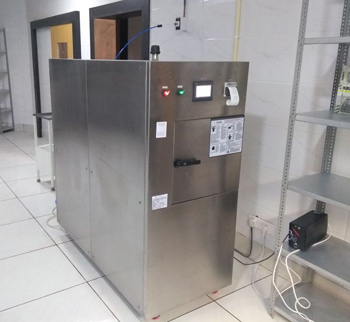An ethylene oxide (EO) sterilization cycle involves the gas reaction non and diffusion of ethylene oxide to kill microbial DNA. Four variables are simultaneously controlled during the sterilization process: product size, packaging, time, and relative humidity. The higher the temperature, the shorter the time that the product will come into contact with ethylene oxide and the lower the EO residue level. The amount of EO residue varies according to product size, packaging, and exposure time.
The ethylene oxide sterilization process is a proven method of sterilisation. The EO process can be used on various types of medical devices and other objects. It has been found to be safe and effective for a variety of applications. It is a versatile, cost-effective solution for a range of processes. However, a high dose of EO may cause harmful effects. As such, it must be handled with care.
A good understanding of the sterilization process is essential to addressing process problems. For instance, improperly designed pouches can damage the article during the evacuation process, rendering it unsuitable for EO sterilization. Depending on the nature of the application, a certified technician or tech team can assist you. Often, an EO sterilizer technician can solve a process problem quickly and accurately.

An EO sterilizer should have a recirculation system to ensure a homogeneous sterilization atmosphere. It should also include a header system that removes gasses from the floor of the vessel and injects them in the ceiling of the vessel. The reason for the recirculation system is that the ethylene oxide is heavier than air and is similar to carbon dioxide or dry ice.
While ethylene oxide can kill bacteria, it can be toxic for the human body. In addition to the risk of acute poisoning, the gas can cause damage to the central nervous system. The chemicals can affect memory and hand-eye coordination, and can cause other serious health effects. Aside from these potential health hazards, ethylene oxide is also highly flammable and can cause a toxic environment. If you are a medical device engineer, it’s important to have a thorough understanding of the process before you manufacture and sell your product.
While an ethylene oxide sterilizer can be used to sterilize a wide variety of medical devices, there are several concerns associated with the gas. It can cause serious problems for the lungs and is highly toxic to the lungs. It should be handled with care and should be thoroughly tested before use. A third party should be involved in the process to ensure the safety of the sterilization. You should also make sure that the ethylene oxide sterilizer is able to safely disinfect the device.
ETO sterilization is a very effective process, but there are some risks that you should be aware of. First, it may cause the onset of cancer in humans and is dangerous to animals. In addition to causing cancer, it is toxic to a wide range of other materials. As such, you must ensure that the ethylene oxide sterilizer you are using is safe. A proper EO sterilizer should be registered with the EPA, and a manufacturer should have a license to use it.






